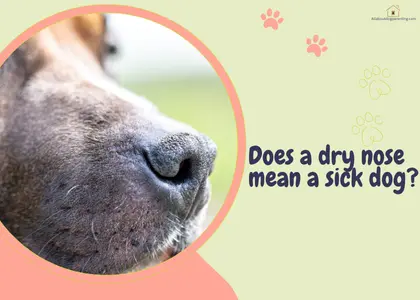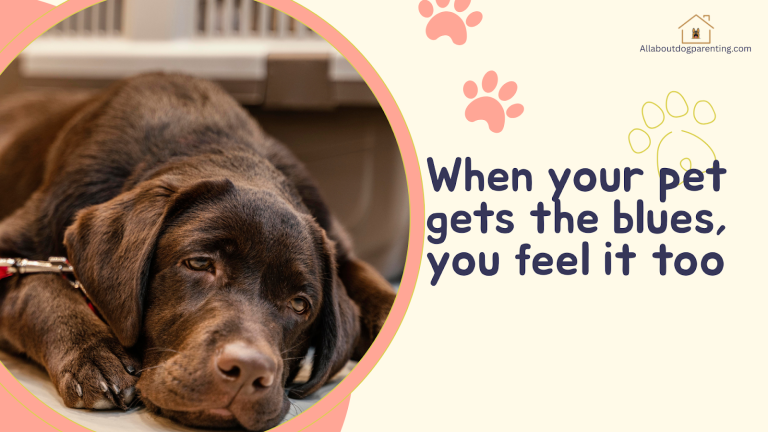Understanding Your Dog’s Body Language: A Visual Guide
If you are a pet parent or planning on taking on this role, learning dog body language should be at the top of your priority list because while dogs can’t speak words, they communicate everything through their posture, tail wags, ear positions, and sounds. As a dog mom of over 15 years, I can say with absolute certainty that the ability of reading dog body language can be a game-changer in the pet parenting journey.
Not being able to read a dog’s signals can impede understanding dog behavior, which can lead to stress, conflict, or even mishaps. For example, wagging tails are often considered the sign of a happy dog. However, through observation, I learned that my first GSD would wag his tail, only a lot slower than his usual happy wags, when he was nervous, especially around other dogs. This awareness helped ensure that I didn’t push him into situations that could lead to fights or aggression. So, you see, when it comes to reading dog body language, context is everything.
This is just one example. From raised hackles to soft whale eyes, there are so many dog signals that many people fail to read correctly or recognize. This dog body language guide attempts to change that by fostering a better understanding of canine communication through body language, backed by own experiences and tips from canine behaviorists and body language experts.
Basics of Dog Communication
Dogs speak with their bodies more than their voice. From head to tail, every movement contributes to dog communication. Yes, they might bark or whine in different tones to express what they want or need in the moment. But often it’s the body language that tells the whole story. You cannot understand canine behavior or be adept at interpreting dog signals without being attudent to these actions and their meanings, especially when it comes to spotting signs of stress in dogs..
“Context is everything. The same signal can mean different things in different situations.” —. Leslie Sinn, a veterinary behaviorist
For example, a wagging tail could be friendly or fearful, depending on its speed and height. Instead of judging one cue alone, watch your dog’s whole body. A combination of posture, ear tilt, eye expression, and even vocal tone will give you the full picture. “Taking a fuller view helps you interpret your dog’s emotions correctly,” she adds.
Key Areas of Dog Body Language
When you’re reading dog body language, it helps to break things down into specific areas. “Your dog is constantly sending messages through their tail, ears, eyes, mouth, and overall posture, sometimes backed up by vocalizations,” explains Dr Sinn. Each part tells a piece of the story, but the real meaning comes from looking at them together. For example, a wagging tail might seem happy at first, but paired with stiff posture and a hard stare, it signals something very different. In this dog body language guide, we’ll look at the main body cues one by one so you can interpret dog signals with more confidence and understand what your dog is really trying to say.
- Tail Position and Movement
A dog’s tail plays a key role in canine communication, and its movement can convey different things in different situations. By understanding dog tail meaning, you’ll know when a wag is truly joyous or a warning in disguise. Here are some important tail movements and positions you need to be aware of:
- A fast, broad wag with a loose body usually means excitement and friendliness
- A slow or stiff wag, especially when held high, indicates high arousal. The dog might be alert or uneasy
- A tail held up can signal confidence or even aggression
- While a low or tucked tail means fear or stress
Having watched my 4 GSDs over the years, I’ve learned that a loose, sweeping wag often means “all is well,” while a rapid, narrow wag often means high excitement or uncertainty.
- Ear Position
Your dog’s ears are like antennae for how they feel. You cannot interpret canine body language correctly without an understanding of dog ear signals. Here are some of the most prominent ones to watch out for:
- Forward, perked ears show alertness and curiosity. If your dog’s ears perk up at a sound, they’re interested
- In contrast, ears pulled back or flattened against the head usually indicate fear, stress or submission
- A nervous pup will glue its ears back
- Relaxed dogs hold their ears in a neutral, comfortable position
3. Eye Contact and Expressions
A dog’s eyes, too, reveal a lot.
- Soft eyes and slow blinks signal a relaxed, trusting dog. You might say it’s a “smiley” look
- A direct hard stare is typically a warning or challenge, which can sometimes escalate into aggressive dog behavior if ignored.
- Whale eyes in dogs, that is when you can see mostly the whites of their eyes, mean they’re anxious or threatened
4. Mouth and Facial Expressions
Dog facial expressions and the position of their mouth also convey their state of mind.
- A relaxed, slightly open mouth, almost like panting, means a calm, happy dog
- If you notice lip licking or yawning, when not eating or sleepy, those are calming signals in dogs. These are signs that your dog is stressed or anxious and trying to self-soothe
- Bared teeth or a tight-lipped snarl is a clear warning. It is often accompanied with a growl and stiff posture
5. Overall Posture
To correctly deduce your dog’s body language, you need to look at them in entirety and read the different cues in conjunction with each other and the situation. For example,
- The classic play bow with front legs down, rear end up is an invitation: “Let’s play!” A dog in a play bow is feeling playful and inviting you or another dog to play
- A dog that crouches or hunches low to the ground is usually afraid or submissive. They’re making themselves small and saying “I’m scared.”
- On the other hand, a stiff with a forward stance with weight on the front legs indicates alertness or possible aggression
When my dog takes on a stiff stance, with ears pointed forward and tail wagging slowly, I know, for a fact, that there is another dog in the vicinity and my GSD is on alert. Being able to deduce this ahead of time, helps me stay in control and prevent escalations like lunging, barking, or full-blown aggression.
6. Vocalizations + Body Language
This dog body language guide wouldn’t be complete without talking about dog sounds because they reinforce the message
- A bark with a wagging tail usually just means “I’m excited” or playful
- A low growl with a stiff body is a serious warning
- Whining adds another layer. A short whine during fetch is fine, but a prolonged whine with ears back or tail down often means stress or discomfort
Common Body Language Signals and What They Mean
Dogs show these different body language signals in everyday situations. Here’s a quick guide on reading dog body language signals in conjunction with one another to deduce the correct meaning:
| Situation | Dog Body Language | Meaning |
| Meeting a new person | Loose wagging tail, relaxed posture | Friendly curiosity |
| Meeting a new person | Tail tucked, ears back, cowering | Fearful or submissive |
| Encountering another dog | Play bow, chest down, rump up, wiggling body | Play invitation |
| Encountering another dog | Stiff stance, hackles up, direct stare | Warning or aggression |
| At the vet | Ears pinned back, tail lowered or tucked, lip licking or yawning | Anxiety or stress |
| During playtime | Fast wagging tail, open mouth, play bow | Happy and excited |
In each situation, look at clusters of signals for understanding the correct dog behavior meaning. For instance, if your dog meets a friendly stranger with a wagging tail and relaxed body, they’re likely curious and happy. If the tail is down and the body is stiff, your dog is clearly uncomfortable or scared.
Signs of Stress, Anxiety, and Aggression
Sometimes, dogs give subtle stress signals. Here’s what stressed dog body language in different situations:
- The most anxious dog signs include lip licking, yawning, and averted gaze
- A stressed dog may pace or shake off like a wet dog shake
- Anxiety can also cause trembling, hiding, or sudden heavy shedding
- Stress can also lead to aggressive dog body language such as deep growling or snarling with bared teeth, a tense body, and raised hackles. These signals mean your dog is feeling threatened or ready to defend itself
Spotting these warning signs in dogs early lets you step in and calm things down before a bite can happen, making dog training with positive reinforcement even more effective.
How to Respond to Dog Body Language
Interpreting dog behavior correctly is only part of the puzzle. You also need to know how to respond to dog body language. Here are a few tips:
- First, stay calm and patient. Forcing interaction when a dog is stressed is a common mistake
- Instead, give them space and time to relax.
- Whenever your dog shows calm behavior like sitting quietly or sniffing instead of barking reward that positive behavior with treats and praise
- Using positive reinforcement training teaches your dog that staying relaxed brings good results
Over time, this approach becomes a trusted routine. Your dog learns that they can rely on you even when the circumstances are not favourable. This goes a long way in making your bond stronger.
Dog Body Language Visual Guide
Here is a quick visual reference of dog body language:
A quick guide to dog signals like this lets you see all these cues at a glance. Print it out and paste it on your fridge or save it in your phone for easy reference. It’s a handy tool when you need a refresher on what each posture or expression means for your dog.
Takeaway: Building Stronger Bonds Through Understanding
Understanding dog body language is the first step to building a stronger bond with your pet, just like learning basic obedience training for dogs strengthens communication and trust. When you know what your dog is saying, you’ll respond in ways that make them feel safe and understood. Practice observing your dog every day. Notice when their tail wags or their eyes soften, or when they pull away or lick their lips.Over time, reading dog behavior becomes second nature. You’ll quickly pick up even the smallest happy dog signals, which strengthens trust and makes communication smooth and clear. For more dog training and care guides, check out AllAboutDogParenting.com. Each insight will help you and your dog live in happier harmony.







